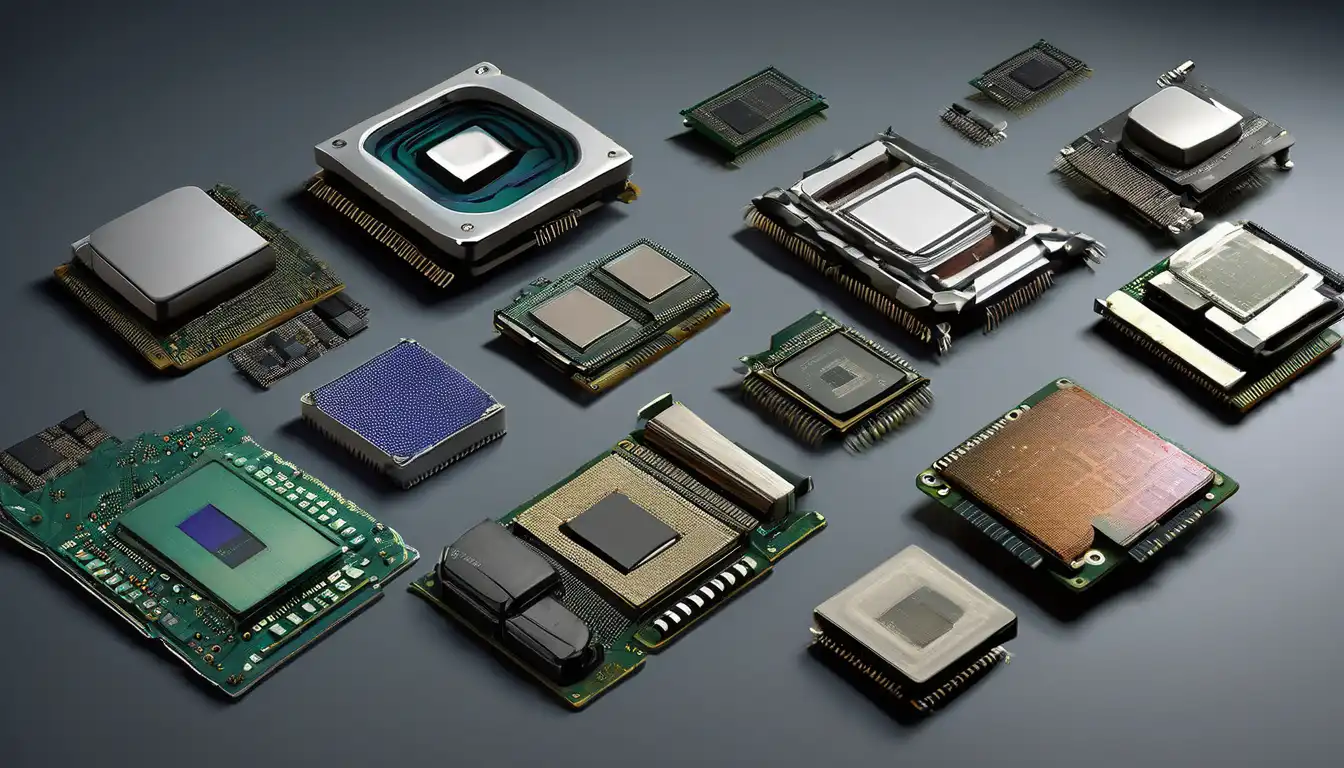The Dawn of Computing: Early Processor Technologies
The evolution of computer processors represents one of the most remarkable technological journeys in human history. Beginning with primitive vacuum tube systems in the 1940s, processors have undergone revolutionary changes that have fundamentally transformed how we live, work, and communicate. The first electronic computers, such as ENIAC, utilized thousands of vacuum tubes that consumed enormous amounts of power and required constant maintenance. These early processors operated at speeds measured in kilohertz and occupied entire rooms, yet they laid the foundation for the digital revolution that would follow.
The Transistor Revolution
The invention of the transistor in 1947 marked a pivotal moment in processor evolution. Developed at Bell Labs by John Bardeen, Walter Brattain, and William Shockley, transistors replaced bulky vacuum tubes with smaller, more reliable semiconductor devices. This breakthrough enabled processors to become more compact, energy-efficient, and affordable. By the late 1950s, transistor-based computers began appearing in research institutions and large corporations, setting the stage for the integrated circuit revolution that would follow.
The Integrated Circuit Era
The development of the integrated circuit (IC) in 1958 by Jack Kilby at Texas Instruments and Robert Noyce at Fairchild Semiconductor represented another quantum leap in processor technology. ICs allowed multiple transistors to be fabricated on a single silicon chip, dramatically increasing processing power while reducing size and cost. This innovation paved the way for the first commercially successful microprocessors and established the foundation for modern semiconductor manufacturing processes that continue to evolve today.
The Birth of Microprocessors
In 1971, Intel introduced the 4004, the world's first commercially available microprocessor. This 4-bit processor contained 2,300 transistors and operated at 740 kHz, yet it demonstrated the potential for putting complete computing power on a single chip. The success of the 4004 led to increasingly powerful processors throughout the 1970s, including the 8-bit Intel 8080 and Zilog Z80, which powered the first personal computers and began the democratization of computing power.
The Personal Computer Revolution
The 1980s witnessed the rise of personal computing, driven by processors like the Intel 8088 used in IBM's first PC. This era saw fierce competition between processor architectures, including Motorola's 68000 series in Apple computers and various RISC architectures in workstations. The introduction of 16-bit and later 32-bit processors enabled more sophisticated operating systems and applications, transforming computers from hobbyist tools into essential business and personal devices.
Key Developments in Processor Architecture
- Instruction Set Architecture (ISA): The evolution from CISC to RISC designs
- Clock Speed Increases: From megahertz to gigahertz performance
- Parallel Processing: The introduction of multi-core architectures
- Cache Memory: Hierarchical memory systems for improved performance
The Modern Processor Landscape
Today's processors represent the culmination of decades of innovation in semiconductor technology. Modern CPUs contain billions of transistors fabricated using nanometer-scale processes, operating at frequencies exceeding 5 GHz while consuming minimal power. The evolution has been guided by Moore's Law, which predicted the doubling of transistor density approximately every two years. This relentless progress has enabled everything from smartphones and cloud computing to artificial intelligence and scientific research.
Specialized Processors and Heterogeneous Computing
The current era is characterized by specialized processors designed for specific workloads. Graphics Processing Units (GPUs) have evolved from simple display controllers to powerful parallel processors essential for gaming, scientific computing, and AI training. Other specialized processors include:
- AI accelerators and neural processing units (NPUs)
- Field-programmable gate arrays (FPGAs) for customizable logic
- System-on-chip (SoC) designs integrating multiple functions
- Quantum processing units (QPUs) for experimental computing
Future Directions in Processor Technology
As traditional silicon-based computing approaches physical limits, researchers are exploring several promising directions for future processor evolution. Quantum computing represents a fundamentally different approach to processing information, while neuromorphic computing aims to mimic the brain's neural architecture. Other emerging technologies include photonic computing, which uses light instead of electricity, and three-dimensional chip stacking for increased density. The continued evolution of processor architectures will likely focus on energy efficiency, specialized acceleration, and new computing paradigms.
Sustainability and Environmental Considerations
The evolution of processors must also address growing concerns about energy consumption and environmental impact. Future developments will likely emphasize power efficiency, recyclable materials, and sustainable manufacturing processes. As computing becomes increasingly pervasive, the industry faces the challenge of continuing performance improvements while minimizing ecological footprint—a consideration that will shape processor evolution for decades to come.
The journey from vacuum tubes to modern multi-core processors demonstrates humanity's remarkable capacity for innovation. Each generation of processor technology has built upon previous advancements while opening new possibilities for computation. As we stand on the brink of quantum and neuromorphic computing eras, the evolution of processors continues to accelerate, promising even more transformative changes in how we process information and solve complex problems. The history of processor evolution serves as both a testament to human ingenuity and a preview of the computational wonders yet to come.
